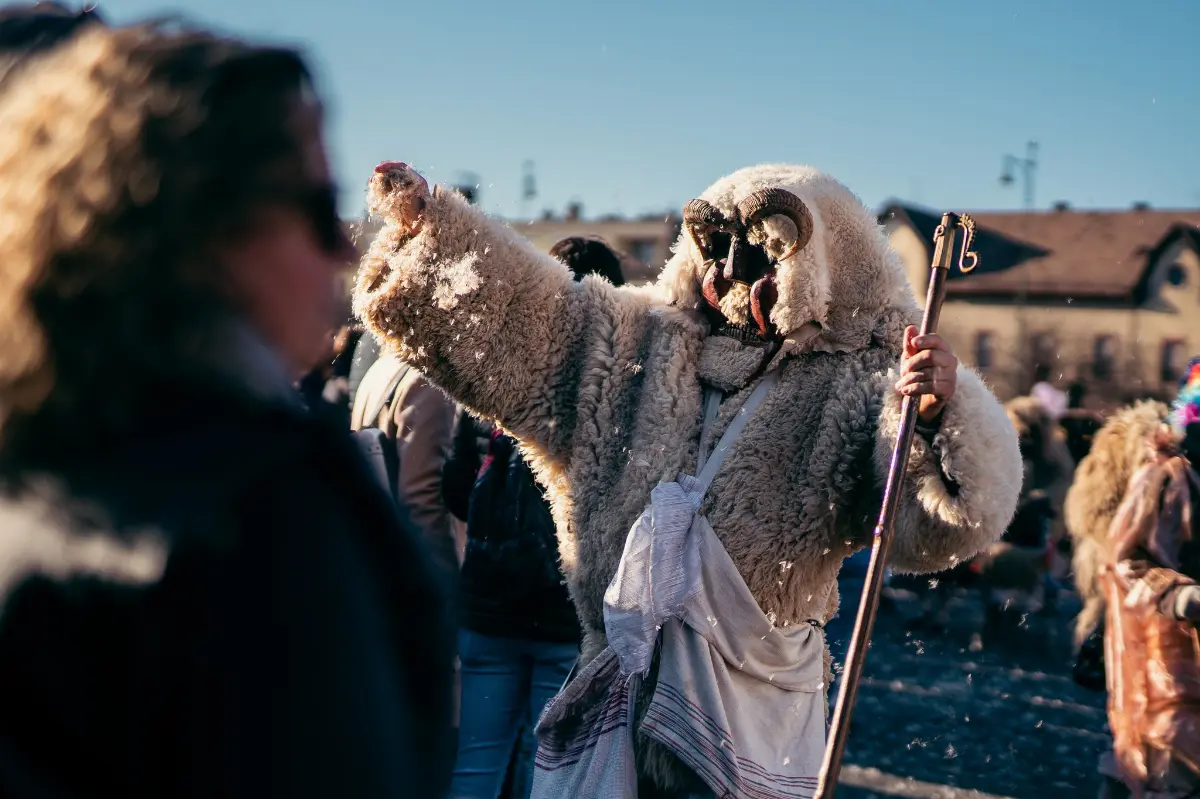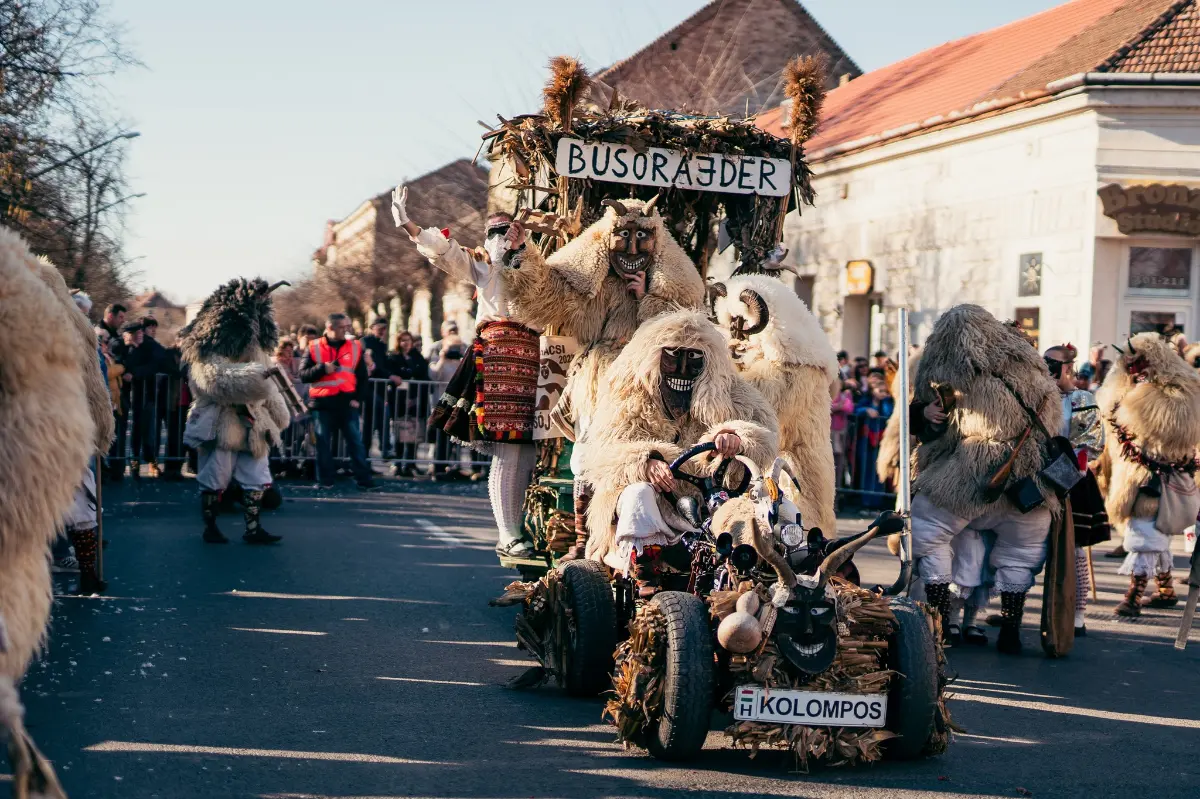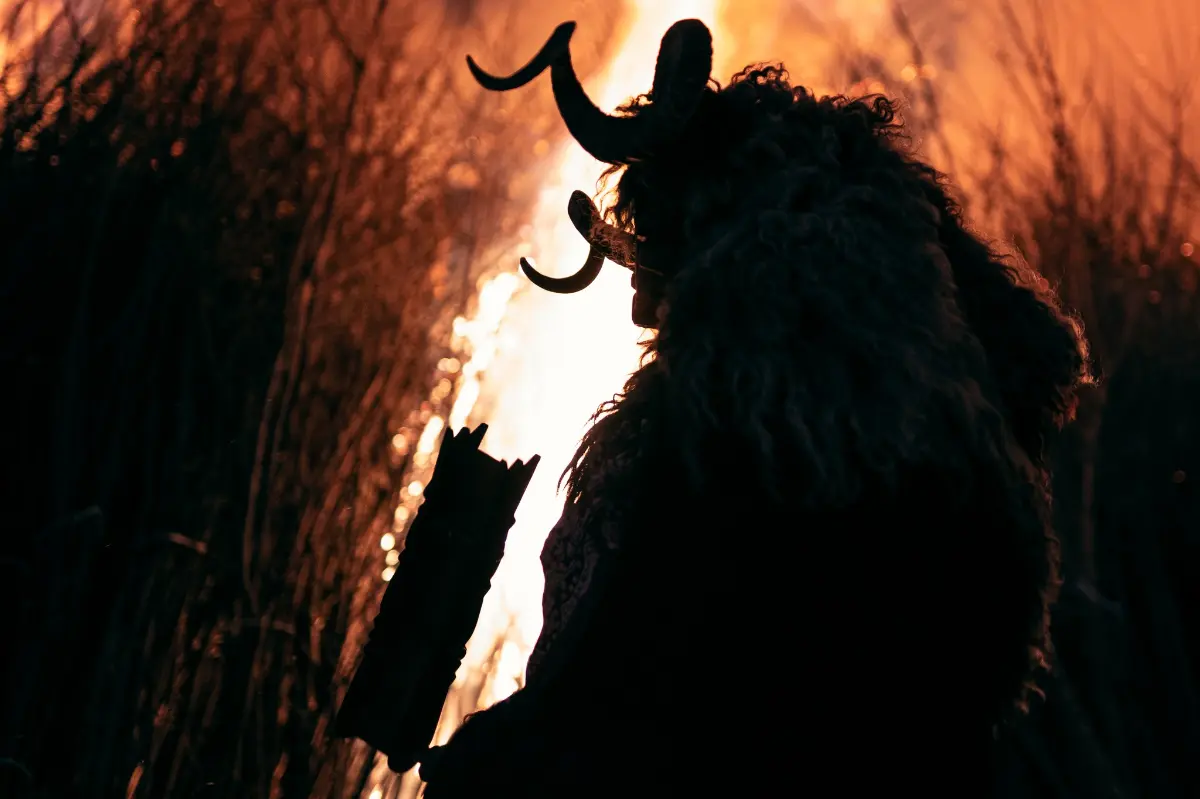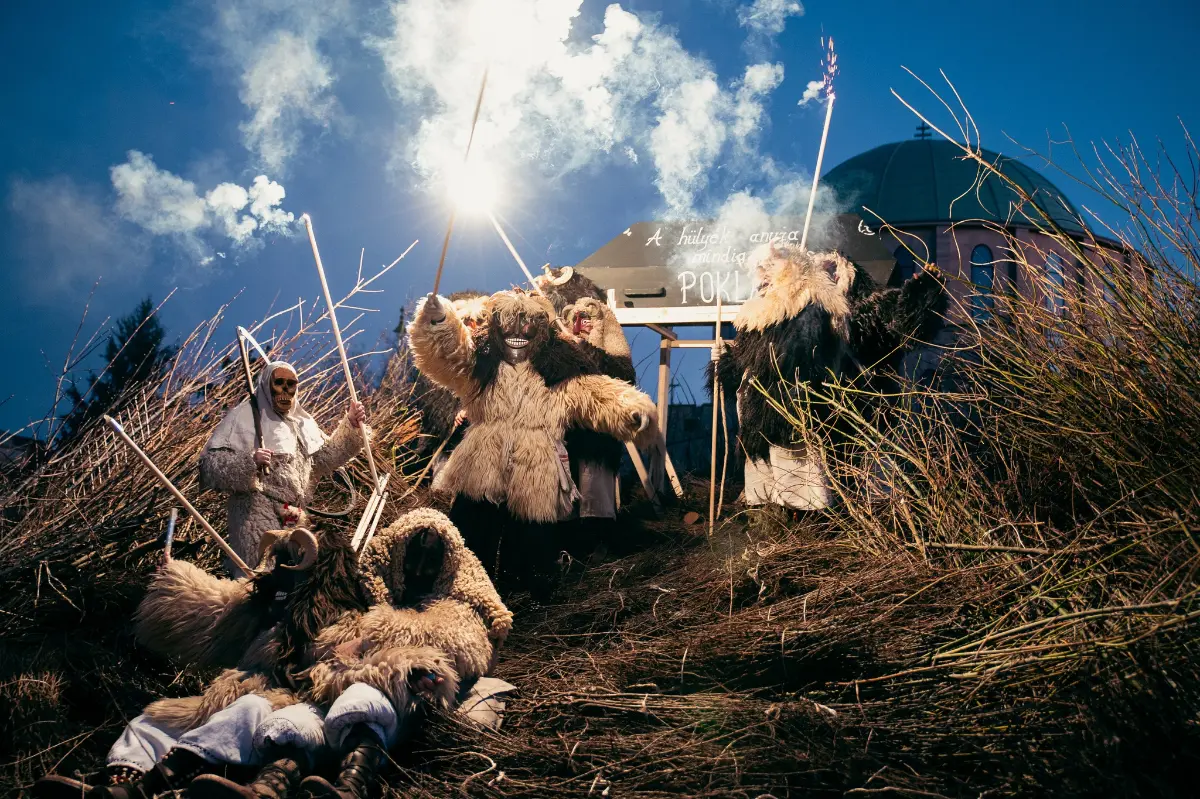
Helyszín címkék:
8 interesting facts you may not have known about the Mohács Busó festival
Németh Krisztina
1. We have a journalist in the capital to thank for the word “busójárás” (‘busó parade’)
In fact, the tradition practised by the Sokac people is called Poklada. This literally means rebirth or renewal. The Hungarian name, however, has nothing to do with the transition from winter to spring. The busójárás as a name is the result of the 1920’s–1930’s, when this custom was noticed and a journalist from Budapest who visited Mohács described what he saw. According to his report, these busós (the local Sokac people called the dressed ones busós – buše means in the Sokac languages bushy – ed.) were going around the town. That's why he described it as a walk of busós. After all, he saw the busós going from one house to another. Therefore busójárás (‘the walk of busós”), as a word, is the work of a journalist.
2. A must for busós is the soot, a sign of purification
The busós use this to cover their faces in order to preserve their incognito when the mask is lifted, since the incognito is the most important element of the tradition: if the busó reveals his identity, the magic is broken. Another important element is ash. When the fire burns, ash is generated. This ash symbolizes rebirth and protects against disease, and was once used as an alkalizing agent in washing. During house visits, the busós sprinkle ashes on the corners of the house to keep diseases away from the inhabitants of the house.

3. In 1783, the authorities wanted to ban the tradition of busó parade
According to the document, representatives visited Mohács from the Bishopric of Pécs, where they saw what devilish masks people were wearing, and, claiming that these frightening figures were a pagan custom in the town, asked the Bishop to put an end to this custom immediately. This is the first written record of the fact that by the late 1700’s, there was already a serious tradition of busójárás.
4. To this day, it is still a mystery exactly when the busójárás started.
This is currently still being researched. What we do know for sure is that after the defeat of the Battle of Mohács in 1526, the area around Mohács was depopulated during the Turkish rule. [RF1] After the victorious Battle of Mohács II in 1687, the settlement of foreign peoples in these areas began, and the Sokac people arrived from northern Bosnia, bringing with them the foundations of this tradition. Thus, it is concluded that this is the time when the busójárás started.
Innen hiányzik egy rész.
5. There are several carnivals around the world (in Bulgaria, Slovenia, Venice and Rio), but all of them are carnival celebrations, i.e. parades.
The Mohács busó parade is unique in that, based on ancient traditions, the busós (i.e. the dressed up) and the visitor interact and chase the winter away together. This special link is one of the reasons why the busójárás was chosen as a part of UNESCO World Heritage.
6. Until the 1960’s, the busós had such a level of freedom that even the police could not verify their identity cards.
In those days, it also happened that, while a group of busós would dance and have fun in the room of a host they didn’t like, the others would plough up the yard, take the cart they found there to pieces and assemble it on the roof of the house. The owner of the house did not notice any of this and only noticed the damage after the busós had left. In return for payment, he called the group back to restore the original conditions. This is no longer the case, and there are strict rules governing the behaviour of busós.

7. The busó parade has been a part of UNESCO World Intangible Cultural Heritage since autumn 2009,
which is why the Code of Busó Parade (Busójárási Kódex) describes exactly what a busó can wear and how he or she can behave. They even specify what they can march with in the parade. A new rule from 2023 is that larger tractors and other vehicles will not be allowed to take part in the event because they are not authentic.
8. Mysterious, walled-up masks from the past
About 10 years ago, as a result of an extensive renovation, people found busó masks that had been walled into the old houses on the island of Mohács many years ago. It was a similar custom in many parts of the world to ward off evil spirits. The homeowners of Mohács, however, did not know about these ghostly masks until now. They are still searching for the answer as to when they could have been there. At the same time, the authorities are still looking for similar masks from homeowners in Mohács who might come across them during a house renovation.




